#American Chronicles
Explore tagged Tumblr posts
Text
The Death of School 10! How Declining Enrollment Is Threatening The Future of American Public Education.
— By Alec MacGillis | August 26, 2024

The building that housed Rochester’s now shuttered School 10. Such closures “rend the community,” a professor of education said.Photographs by Joshua Rashaad McFadden for The New Yorker
In The Nineteen-Nineties, when Liberia descended into civil war, the Kpor family fled to Ivory Coast. A few years later, in 1999, they were approved for resettlement in the United States, and ended up in Rochester, New York. Janice Kpor, who was eleven at the time, jokingly wonders whether her elders were under the impression that they were moving to New York City. What she remembers most about their arrival is the trees: it was May, yet many were only just starting to bud. “It was, like, ‘Where are we?’ ” she said. “It was completely different.”
But the Kpors adapted and flourished. Janice lived with her father in an affordable-housing complex close to other family members, and she attended the city’s public schools before enrolling in St. John Fisher University, just outside the city, where she got a bachelor’s degree in sociology and African American studies. She found work as a social-service case manager and eventually started running a group home for disabled adults.
She also became highly involved in the schooling of her three children, whom she was raising with her partner, the father of the younger two, a truck driver from Ghana. Education had always been highly valued in her family: one of her grandmothers had been a principal in Liberia, and her mother, who remained there, is a teacher. Last fall, when school started, Kpor was the president of the parent-teacher organization at School 10, the Dr. Walter Cooper Academy, where her youngest child, Thomasena, was in kindergarten. Her middle child had also attended the school.
Kpor took pleasure in dropping by the school, a handsome two-story structure that was built in 1916 and underwent a full renovation and expansion several years ago. The school was in the Nineteenth Ward, in southwest Rochester, a predominantly Black, working- and middle-class neighborhood of century-old homes. The principal, Eva Thomas, oversaw a staff that prided itself on maintaining a warm environment for two hundred and ninety-nine students, from kindergarten through sixth grade, more than ninety per cent of whom were Black or Latino. Student art work filled the hallways, and parent participation was encouraged. School 10 dated only to 2009—the building had housed different programs before that—but it had strong ties to the neighborhood, owing partly to its namesake, a pioneering Black research scientist who, at the age of ninety-five, still made frequent visits to speak to students. “When parents chose to go to this particular school, it was because of the community that they have within our school, the culture that they have,” Kpor told me.
Because she was also engaged in citywide advocacy, through a group called the Parent Leadership Advisory Council, Kpor knew that the Rochester City School District faced major challenges. Enrollment had declined from nearly thirty-four thousand in 2003 to less than twenty-three thousand last year, the result of flight to the suburbs, falling birth rates, and the expansion of local charter schools, whose student population had grown from less than two thousand to nearly eight thousand during that time. Between 2020 and 2022, the district’s enrollment had dropped by more than ten per cent.
The situation in Rochester was a particularly acute example of a nationwide trend. Since the start of the coronavirus pandemic, public-school enrollment has declined by about a million students, and researchers attribute the drop to families switching to private schools—aided by an expansion of voucher programs in many red and purple states—and to homeschooling, which has seen especially strong growth. In addition, as of last year, an estimated fifty thousand students are unaccounted for—many of them are simply not in school.
During the pandemic, Rochester kept its schools closed to in-person instruction longer than any other district in New York besides Buffalo, and throughout the country some of the largest enrollment declines have come in districts that embraced remote learning. Some parents pulled their children out of public schools because they worried about the inadequacy of virtual learning; others did so, after the eventual return to school, because classroom behavior had deteriorated following the hiatus. In these places, a stark reality now looms: schools have far more space than they need, with higher costs for heating and cooling, building upkeep, and staffing than their enrollment justifies. During the pandemic, the federal government gave a hundred and ninety billion dollars to school districts, but that money is about to run dry. Even some relatively prosperous communities face large drops in enrollment: in Ann Arbor, Michigan, where enrollment has fallen by more than a thousand students since the fall of 2019, the city is planning to lay off some ninety teachers; Santa Clara, which is part of Silicon Valley, has seen a decrease of fourteen per cent in a decade.
On September 12, 2023, less than a week after the school year started, Rochester’s school board held what appeared to be a routine subcommittee meeting. The room was mostly empty as the district’s superintendent, Carmine Peluso, presented what the district called a “reconfiguration plan.”
A decade earlier, twenty-six hundred kindergarten students had enrolled in Rochester’s schools—roughly three-quarters of the children born in the city five years before. But in recent years, Peluso said, that proportion had sunk to about half.
Within ten years, Peluso said, “if we continue on this trend and we don’t address this, we’re going to be at a district of under fourteen thousand students.” The fourth-largest city in New York, with a relatively stable population of about two hundred and ten thousand, was projecting that its school system would soon enroll only about a third of the city’s current school-age population.
Peluso then recommended that the Rochester school district close eleven of its forty-five schools at the end of the school year. Kpor, who was watching the meeting online, was taken aback. Five buildings would be shuttered altogether; the other six would be put to use by other schools in the district.
School 10 was among the second group. The school would cease to exist, and its building, with its new gymnasium-auditorium and its light-filled two-story atrium, would be turned over to a public Montessori school for pre-K through sixth grade, which had been sharing space with another school.
Kpor was stunned. The building was newly renovated. She had heard at a recent PTA meeting that its students’ over-all performance was improving. And now it was being shut down? “I was in disbelief,” she said. “It was a stab in the back.”
School Closures Are a Fact of Life in a country as dynamic as the United States. Cities boom, then bust or stagnate, leaving public infrastructure that is incommensurate with present needs. The brick elementary school where I attended kindergarten and first grade, in Pittsfield, Massachusetts, was closed in the early eighties, as the city’s population declined, and then was razed to make way for a shopping plaza.
Still, there is a pathos to a closed school that doesn’t apply to a shuttered courthouse or post office. The abandonment of a building once full of young voices is an indelible sign of the action having moved elsewhere. There is a tangible cost, too. Researchers have found that students whose schools have been closed often experience declines in attendance and achievement, and that they tend to be less likely to graduate from college or find employment. Closures tend to fall disproportionately on majority-Black schools, even beyond what would be expected on the basis of enrollment and performance data. In some cities, efforts to close underpopulated schools have become major political issues. In 2013, Chicago, facing a billion-dollar budget deficit and falling enrollment, closed forty-nine schools, the largest mass closure in the country’s history. After months of marches and protests, twelve thousand students and eleven hundred staff members were displaced.
Now, as a result of the nationwide decline in enrollment, many cities will have to engage in disruption at a previously unseen scale. “School closures are difficult events that rend the community, the fabric of the community,” Thomas Dee, a professor of education at Stanford, said. He has been collecting data on declining enrollment in partnership with the Associated Press. “The concern I have is that it’s going to be yet another layer of the educational harm of the pandemic.”
Janice Kpor knew that her family was, in a sense, part of the problem. Her oldest child, Virginia, had flourished in the early grades, so her school put her on an accelerated track, but it declined to move her up a grade, as Kpor had desired. Wanting her daughter to be sufficiently challenged, Kpor opted for the area’s Urban-Suburban program, in which students can apply to transfer to one of the many smaller school districts that surround Rochester; if a district is interested in a student, it offers the family a slot. The program began in 1965, and there are now about a thousand children enrolled. Virginia began attending school in Brockport, where she had access to more extracurricular activities.
Supporters call Urban-Suburban a step toward integration in a region where city schools are eighty-five per cent Black and Latino and suburban districts are heavily white. But critics see it as a way for suburban districts to draw some of the most engaged families out of the city’s schools; the selectiveness of the suburban districts helps explain why close to a quarter of the students remaining in the city system qualify for special-education services. (The local charter schools are also selective.) One suburban district, Rush-Henrietta, assured residents that it would weed out participants who brought “city issues” with them, as Justin Murphy, a reporter for the Rochester Democrat & Chronicle, wrote in his book, “Your Children Are Very Greatly in Danger,” a history of segregation in the city’s schools.
Kpor understood these concerns even as she watched Virginia thrive in the suburbs, then go on to attend the Rochester Institute of Technology. As Kpor saw it, each child’s situation was unique, and she tried to make decisions accordingly. “It’s where they’re at,” she said. “It’s not all or nothing for me.”
She enrolled her middle child, Steven, in School 10 for kindergarten and immediately liked the school, but stability was elusive. First, the school moved to temporary quarters for the renovation. Then came disagreements with a teacher who thought that her son’s behavioral issues stemmed from A.D.H.D. Then the pandemic arrived, and her son spent the final months of second grade and most of third on Zoom. For fourth grade, she decided to try Urban-Suburban again. He was accepted by Brockport, which sent a bus to pick him up every morning.
Other parents shared similar accounts with me of the aftermath of the pandemic closures. Ruthy Brown said that, after the reopening, her children’s school was rowdier than before, with more frequent fights and disturbances in the classroom; a charter school with uniforms suddenly seemed appealing. Isabel Rosa, too, moved her son to a charter school, because his classmates were “going bonkers” when they finally returned to in-person instruction. (She changed her mind after he was bullied by a charter-school security guard.) Carmen Torres, who works at a local advocacy organization, the Children’s Agenda, watched one of her client families get so frustrated by virtual instruction that they switched to homeschooling. “Enough is enough,” Torres recalled the mother saying. “My kids need to learn how to read.”
But, when it came time to enroll Thomasena, Kpor resolved to stick with the district, and she was so hopeful about her daughter’s future at School 10 that she took the prospect of its closure with great umbrage. She and other parents struggled to understand the decision. One of the reasons School 10 was chosen to close was that it was in receivership—a designation for public schools rated in the bottom five per cent in the state, among Peluso’s criteria for closure—but Kpor knew that the receivership was due not only to low test scores but also to the school’s high rate of absenteeism, which was, she believed, because the school roster was outdated, filled with students who were no longer there. According to a board member, the state had also placed School 10 on a list of dangerous schools, partly owing to an incident in which a student had been found with a pocketknife.
Making matters worse, for Kpor, was that the building was going to be turned over to another program, School 53, the Montessori school. It would be one thing for School 10 to be shut down because the district needed to cut costs. But the building had just been renovated at great expense, an investment intended for School 10, and now those students and teachers were being evicted to make room for others. “It was more of an insult,” Kpor said, “because now you have this place and all these kids and a whole bunch of new kids in the same building, so what is the logic of, quote-unquote, closing the school?”
The awkwardness of this was not lost on the parents of School 53. The school had a slightly higher proportion of white families and a lower one of economically disadvantaged students than School 10, and it was expected to draw additional white families once it moved to its new building. “The perception is that you’ve got the kids at this protected, special school—you can see the difference between what they get and what we get,” Robert Rodgers, a parent at School 53, told me. “If I was a parent at School 10, I would be livid.”
After Peluso announced the plan, the district held two public forums, followed by sessions at the targeted schools. The School 10 auditorium was packed for its session, and Kpor lined up at the microphone to speak. She asked Peluso if Thomasena and her classmates would get priority for placement in School 53, so that they could stay in the building. “I do not want her to go to any other school,” she said. “Every time we think we’re doing something right for our kids, someone comes in and dictates to us that our choices are not valid.” Kpor was encouraged to hear Peluso say that School 10 kids would get priority.

Janice Kpor, whose youngest child had just started at School 10 when the city announced its closure.
On October 19th, five weeks after the announcement, the school board met to vote on the closures. During the public-comment period, a teacher from School 2 pleaded with the board to let its students enroll at the school that would be replacing it. A teacher from School 106 asked that the vote be delayed until after board members visited every school, including hers, which was engaged in a yearlong special project geared toward the coming total solar eclipse, so that they could get a more visceral sense of the school’s value. The principal of School 29, Joseph Baldino, asked that the school’s many students with autism-spectrum disorder be kept together, along with their teachers, during the reassignment. “They’re unique, they’re beautiful, and they don’t do real well with change,” he said. Chrissy Miller, a parent at the school, said of her son, “He loves his staff . . . he loves his teachers, and he wants everybody to stay together as one.”
In the end, the closures passed, five to two.
In September, 2020, as many public schools in Democratic-leaning states started the new academic year with remote learning, I asked Randi Weingarten, the president of the American Federation of Teachers, whether she worried about the long-term effects on public education. What if too many families left the system in favor of homeschooling or private schools—many of which had reopened—and didn’t come back? She wasn’t concerned about such hypotheticals. “At the end of the day, kids need to be together in community,” she said.
The news from a growing number of districts suggests that the institution of public schooling has indeed suffered a lasting blow, even in cities that are better funded than Rochester. In Seattle, parents anticipate the closure of twenty elementary schools. The state of Ohio has witnessed a major expansion of private-school vouchers; in Columbus, a task force is recommending the closure of nine schools.
In Rochester, the continuing effects of the pandemic weighed heavily on some. Camille Simmons, who joined the school board in 2021, told me, “A lot of children felt the result of those decisions.” She went on, “There were a lot of entities at play, there were so many conversations going on. I think we should have brought children back much sooner.”
Adam Urbanski, the longtime president of the Rochester teachers’ union, said that the union had believed schools should not reopen until the district could guarantee high air quality, and it had not been able to. “When I reflect back on it, I know that I erred on the side of safety, and I do not regret the position that we took,” he said.
But Rebecca Hetherington, the owner of a small embroidery company and the former head of the Parent Leadership Advisory Council, the group Kpor was part of, feared that the district would soon lack the critical mass to remain viable. “I am concerned there is a tipping point and we’re past it,” she said. Rachel Barnhart, a former TV news reporter who attended city schools and now serves in the county legislature, agreed. “It’s like you’re watching institutions decline in real time,” she told me. “Anchors of the community are disappearing.” School districts have long aspired to imbue their communities with certain shared values and learning standards, but such commonality now seemed inconceivable.
By the spring of 2024, parents at the eleven targeted schools were too busy trying to figure out where their children would be going in the fall to worry about the long term. A mother at School 39, Rachel Dixon, who lived so close to the school that she could carry her kindergartner there, was on the wait list for School 52 but had been assigned to School 50. She wasn’t even sure where that was. Chrissy Miller was upset that School 29’s students with autism were being more broadly dispersed than promised; she worried that her son’s assigned school wasn’t equipped for students with special needs. Many of her fellow School 29 parents were now considering homeschooling or moving, she said, and added, “We don’t have trust in the district at all.” It was easy to envision how the closures could compound the problem, leading to even fewer students and even more closures.
Thomasena had been assigned to School 45, which was close to her family’s home but less convenient for Kpor than School 10, which was closer to her work. Kpor wondered how many other families were in similar situations, with assignments that didn’t take into account the specific context of their lives. “All of this plays into why kids are not going to school,” she said. “You’re placing kids in locations that don’t meet the families’ needs.”
She had taken Peluso’s word that students from School 10 would be given priority at the Montessori school taking its place, and she was disappointed to learn that Thomasena was thirtieth on the wait list there. It was also unclear to her which branch of the central office was handling placement appeals. “It’s all a jumble, and no one really knows how things work,” she said.
On March 26th, as families were dealing with the overhaul, Peluso announced that he was leaving the district to become the superintendent of the Churchville-Chili district, in the suburbs. The district was far smaller than Rochester, with some thirty-eight hundred students, more than seventy per cent of them white, but the job paid nearly as much. “It’s one of the hardest decisions I’ve had,” Peluso said at a news conference. “There’s a lot of commitment I’ve had to this district.” Rodgers, the School 53 parent, told me, “This hurts. It’s another situation where the suburbs are taking something from the city.”
Parents and district staff tried to make sense of Peluso’s departure. Some people speculated that he had grown tired of the treatment he was receiving from certain board members. Other people wondered if he simply wanted a less challenging district. Peluso told me, “It was the best decision for me and my family.”
In Late June, I returned to Rochester for the final days of the school year. I stayed at School 31 Lofts, a hotel in a former schoolhouse that was built in 1919. (The Web site advertises “WhimsyHistorySerenity.”) An empty hallway was still marked with a “Fallout Shelter” sign. I stayed in a room that, judging from its size and location, might have been a faculty lounge.
One afternoon, I met with Demario Strickland, a deputy superintendent who’d been named interim superintendent while the school board searched for a permanent replacement for Peluso. Strickland, a genial thirty-nine-year-old Buffalo native who moved to Rochester last year, was the seventh superintendent of the district since 2016. He told me that he was not surprised the closures had prompted such protests. “School closures are traumatic in itself,” he said.
But he defended the district against several of the criticisms I had heard from parents. School 10 had been improving, he said, but still fell short on some metrics. “Even though they met demonstrable progress, we still had to look at proficiency, and we still had to look at receivership,” he said. And, he added, School 53 had limited slots available, so the district had made no promises to parents of School 10 about having priority.
Still, he said, the district could perhaps have been more empathetic in its approach. “This process has taught me that, in a sense, people don’t care about the money,” he said. “When you make these decisions, you really have to think about the heart. That’s something we could have done a little more. It makes sense—we’re wasting money, throwing money away, we have all these vacancies, that makes sense to us. But our families don’t care about that. Our families want their school to stay open—they don’t want to do away with it.”

At the end of the academic year, Rochester closed eleven of its forty-five schools, including School 39.
I asked him whether he worried that the district’s enrollment decline might continue until the system could no longer sustain itself, as Hetherington and Barnhart feared. “I try not to get scared about the future,” he said.
On the second-to-last day of the school year, I went to School 10 to join Kpor at the end-of-year ceremony for Thomasena’s kindergarten class. She and her fourteen classmates sang songs, demonstrated spelling on the whiteboard, and rose one by one to say what they had liked best about kindergarten. “Education and learning,” Thomasena, a tall girl with her front teeth just coming in, said. “When it’s the weekend,” one boy said, to the laughter of parents.
It was not hard to see why Kpor and other parents were sorry to leave the school, with its gleaming new tile work and hardwood-composite hallway floorboards. A few weeks earlier, the latest assessment results had shown improvement for School 10, putting it close to citywide averages. “All of us are going to be going to different places, but I hope one day that I get to see you again,” the class’s teacher, Karen Lewis, said.
Kpor was still waiting to find out if she had moved up on the list for School 53. I asked if she might have Thomasena apply for Urban-Suburban, like her siblings, and she said she was hoping it would work out in the district. “I still have faith,” she said. Outside, I met a parent who was worried about how her daughter would fare at her new school after having been at School 10 with the same special-needs classmates and teacher for the past three years. “The school has been amazing,” she said.
The Next Day, I attended a school-wide Rites of Achievement ceremony in the gym. Parents cheered as students received awards for Dr. Walter Cooper Character Traits—Responsibility, Integrity, Compassion, Leadership, Perseverance, and Courage. (Thomasena won for Courage.) Thomas, the principal, called up the school’s entire staff, name by name. The shrieks from the assembled children for their favorite teachers and aides indicated the hold that even a school officially deemed subpar can have on its students and families: this had been their home, a hundred and eighty days a year, for as long as seven years.
Walter Cooper himself was there, watching from a thronelike chair with gilt edges. Eventually, he addressed the children for the last time, recounting his upbringing with a father who had received no formal schooling, a mother who preached the value of education, and six siblings, all but one of whom had gone to college. “The rule was we had to have a library card at seven. We didn’t have a lot in this community, but we had books,” he said. “There are always things in the street for you, but there is much more in books. . . . The guiding thesis is: books will set you free.”
The children sang a final song: “I am a Cooper kid, a Dr. Walter Cooper kid, I am, I am / I stand up for what’s right, even when the world is wrong.” Sylvia Cooksey, a retired administrator who is also a pastor, gave the final speech. “No matter where you go, where you end up, you are taking part of this school with you,” she said. “You are taking Dr. Walter Cooper with you. We’re going to hear all over Rochester, ‘That child is from School 10.’ ”
After the assembly, I asked Cooper what he made of the closure. “It’s tragic,” he said. “It points to the fundamental instability in the future of the schools. Children need stability, and they aren’t getting it in terms of the educational process.”
Wanda Zawadzki, a physical-education teacher who had worked at the school for eight years and received some of the loudest shrieks from the kids, stood looking forlorn. She recalled the time a class had persuaded the city to tear down an abandoned house across the street, and the time a boy had brought her smartphone to her after she dropped it outside. “My other school, that phone would have been gone,” she said. “It’s the integrity here.” Like many teachers at the targeted schools, she was still waiting for her transfer assignment. “This was supposed to be my last home,” she said.
And then it was dismissal time. It was school tradition to have the staff come out at the end of every school year and wave at the departing buses as they did two ceremonial loops around the block. Speakers blared music from the back of a pickup, and the teachers danced and waved. “We love you,” Principal Thomas called out.
It was quieter over at School 29, the school with many special-needs kids. The children were gone, and one teacher, Latoya Crockton-Brown, walked alone to her car. She had spent nineteen years at the school, which will be closing completely. “We’re not doing well at all,” she said, of herself and her colleagues. “This was a family school. It’s very disheartening. Even the children cried today.”
She was wearing a T-shirt that read “Forever School 29 / 1965 to Now.” The school had done a lot in recent days to aid the transition—bringing in a snow-cone truck and a cotton-candy machine, hosting a school dance. “One girl said she feels like she’s never going to make friends like she had here,” Crockton-Brown said. “But we have to move on. We have no other choice.” ♦
— This Article is a Collaboration Between The New Yorker and ProPublica. ProPublica is a Nonprofit Newsroom that Investigates Abuses of Power. Published in the Print Edition of the September 2, 2024, Issue, with the Headline “The Last Day.”
#Article#American Chronicles#The New Yorker#ProPublica#“The Last Day”#The Death of School#Declining Enrollment#American Public Education#A Gravely Threath#Alec MacGillis#Alec MacGillis | Reporter | ProPublica | Author ✍️ | “Fulfillment: America in the Shadow of Amazon”
0 notes
Text

#interview with the vampire#what we do in the shadows#astarion#vampire chronicles#vampire the masquerade#anne rice#dracula novel#dracula#first kill#castlevania netflix#castlevania#queer vampires#vampires#carmilla#not quite dead#buffy the vampire slayer#supernatural#the hunger#daughter of darkness#true blood#american horror story#american horror story hotel#the vampire lovers#underworld 2003#lgbtq#queer media#pride#meme#lgbt memes#vampire memes
7K notes
·
View notes
Text
For never having held a gun before, we see time and time again how amazing of a shot Cress is throughout the series. It’s no wonder she stole the heart of the only American on the crew.
#rahhhh rahhhh usa#but literally she never misses#not even once#even Thorne’s first reaction to losing his fingers is to oogle over her#I’m American so I can say this#the lunar chronicles#tlc#marissa meyer#cresswell#carswell thorne#cress darnel#but#captain carswell thorne#crescent moon darnel#lunar chronicles
172 notes
·
View notes
Text
Vol.2 of mashing all my bbgs into one post
After a “long” while of my last post I decided to finally get around to putting peoples requests and recommendations of their fav priests into the format. Keep in mind I don’t know who most of these characters are and I mainly put them in here because they were requested and matched up to the descriptions. Id be lying if I said it wasn’t impossible to squeeze them all into one thing. Thank you all for showing off your deranged priest bbgs!
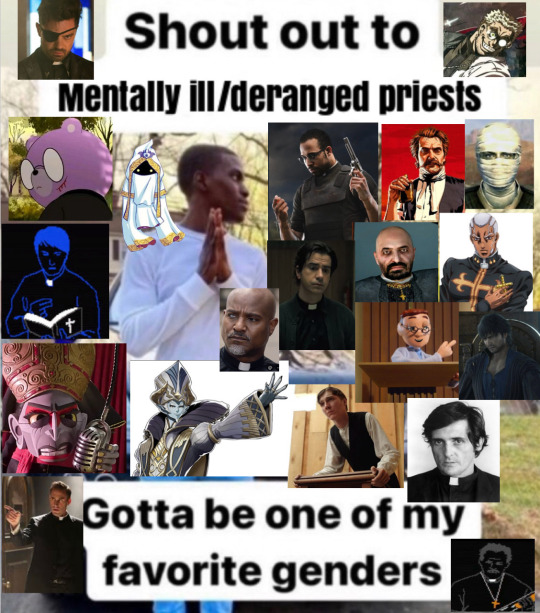
#unicorn wars padre#padre#faith the unholy trinity john#faith the unholy trinity#father garcia#wendell & wild#father bests#twd#the walking dead#father gabriel#hellsing#alexander anderson#barnabus tharmr#final fantasy series#damsels#dominic cooper#Jerome Jeffries#far cry 5#Timothy Howard#american horror story#joshua graham#fallout#hyness#kirby series#amalthus#xenoblade#xenoblade chronicles#enrico pucci#jojo's bizarre adventure
384 notes
·
View notes
Text
Note: Good Omens is by both Terry Pratchett and Neil Gaiman, it just doesn't fit in the character limit lol
The Night Circus by Erin Morgenstern (2011)
The circus arrives without warning. No announcement precedes it, no paper notices plastered on lampposts and billboards. It is simply there, when yesterday it was not.
Within these nocturnal black-and-white-striped tents awaits an utterly unquie experience, a feast did the senses, where no one can be lost in a maze of clouds, meander through a lush garden muse of ice, stare in wonderment as the tattooed contortionist folds herself into a small glass box, and become deliciously tipsy from the scents of caramel and cinnamon that waft through the air.
Welcome to Le Cirque des Rêvez.
Beyond the smoke and mirrors, however, a fierce competition is under way—a contest between two young illusionists, Celia and Marco, who have been trained since childhood to compete in a “game” to which they have been irrevocably bound by their mercurial masters. Unbeknownst to the players, this is a game in which only one can be left standing, and the circus is but the stage for a remarkable battles of imagination and will.
As the circus travels around the world, the feats of magic gain fantastical new heights with every stop. The game is well under way and the lives of all those involved—the eccentric circus owner, the elusive contortionist, the mystical fortune-teller, and a pair of red-haired twins born backstage among them—are swept up in a wake of spells and charms.
But when Celia discovers Marco is her adversary, they begin to think of the game not as a competition but as a wonderful collaboration. With no knowledge of how the game must end, they innocently tumble headfirst into love. A deep, passionate, and magical love that makes the light flicker and the room grow warm whenever they so much as brush hands.
Their masters still pull the strings, however, and this unforeseen occurrence forces them to intervene with dangerous consequences, leaving the lives of everyone from the performers to the patrons hanging in the balance.
The Kingkiller Chronicles by Patrick Rothfuss (2007-present)
My name is Kvothe. I have stolen princesses back from sleeping barrow kings. I burned down the town of Trebon. I have spent the night with Felurian and left with both my sanity and my life. I was expelled from the University at a younger age than most people are allowed in. I tread paths by moonlight that others fear to speak of during day. I have talked to Gods, loved women, and written songs that make the minstrels weep. You may have heard of me.
So begins a tale unequaled in fantasy literature--the story of a hero told in his own voice. It is a tale of sorrow, a tale of survival, a tale of one man's search for meaning in his universe, and how that search, and the indomitable will that drove it, gave birth to a legend.
Six of Crows by Leigh Bardugo (2015-2016)
Ketterdam: a bustling hub of international trade where anything can be had for the right price—and no one knows that better than criminal prodigy Kaz Brekker. Kaz is offered a chance at a deadly heist that could make him rich beyond his wildest dreams. But he can’t pull it off alone. . . .
A convict with a thirst for revenge A sharpshooter who can’t walk away from a wager A runaway with a privileged past A spy known as the Wraith A Heartrender using her magic to survive the slums A thief with a gift for unlikely escapes
Kaz’s crew is the only thing that might stand between the world and destruction—if they don’t kill each other first.
American Gods by Neil Gaiman (2001)
Days before his release from prison, Shadow's wife, Laura, dies in a mysterious car crash. Numbly, he makes his way back home. On the plane, he encounters the enigmatic Mr Wednesday, who claims to be a refugee from a distant war, a former god and the king of America.
Together they embark on a profoundly strange journey across the heart of the USA, whilst all around them a storm of preternatural and epic proportions threatens to break.
Scary, gripping and deeply unsettling, American Gods takes a long, hard look into the soul of America. You'll be surprised by what - and who - it finds there...
The Lunar Chronicles by Marissa Meyer (2012-2015)
Humans and androids crowd the raucous streets of New Beijing. A deadly plague ravages the population. From space, a ruthless lunar people watch, waiting to make their move. No one knows that Earth's fate hinges on one girl. . . .
Cinder, a gifted mechanic, is a cyborg. She's a second-class citizen with a mysterious past, reviled by her stepmother and blamed for her stepsister's illness. But when her life becomes intertwined with the handsome Prince Kai's, she suddenly finds herself at the center of an intergalactic struggle, and a forbidden attraction. Caught between duty and freedom, loyalty and betrayal, she must uncover secrets about her past in order to protect her world's future.
The Princess Bride by William Goldman (1973)
Westley ... handsome farm boy who risks death and much, much worse for the woman he loves; Inigo ... the Spanish swordsman who lives only to avenge his father's death; Fezzik ... the Turk, the gentlest giant ever to have uprooted a tree with his bare hands; Vizzini ... the evil Sicilian, with a mind so keen he's foiled by his own perfect logic; Prince Humperdinck ... the eviler ruler of Guilder, who has an equally insatiable thirst for war and the beauteous Buttercup; Count Rugen ... the evilest man of all, who thrives on the excruciating pain of others; Miracle Max ... the King's ex-Miracle Man, who can raise the dead (kind of); The Dread Pirate Roberts ... supreme looter and plunderer of the high seas; and, of course, Buttercup ... the princess bride, the most perfect, beautiful woman in the history of the world.
S. Morgenstern's timeless tale--discovered and wonderfully abridged by William Goldman--pits country against country, good against evil, love against hate. From the Cliffs of Insanity through the Fire Swamp and down into the Zoo of Death, this incredible journey and brilliant tale is peppered with strange beasties both monstrous and gentle, and memorable surprises both terrible and sublime.
Charlie and the Chocolate Factory by Roald Dahl (1964)
Willy Wonka's famous chocolate factory is opening at last!
But only five lucky children will be allowed inside. And the winners are: Augustus Gloop, an enormously fat boy whose hobby is eating; Veruca Salt, a spoiled-rotten brat whose parents are wrapped around her little finger; Violet Beauregarde, a dim-witted gum-chewer with the fastest jaws around; Mike Teavee, a toy pistol-toting gangster-in-training who is obsessed with television; and Charlie Bucket, Our Hero, a boy who is honest and kind, brave and true, and good and ready for the wildest time of his life!
The Infernal Devices by Cassandra Clare (2010-2013)
Magic is dangerous--but love is more dangerous still.
When sixteen-year-old Tessa Gray crosses the ocean to find her brother, her destination is England, the time is the reign of Queen Victoria, and something terrifying is waiting for her in London's Downworld, where vampires, warlocks and other supernatural folk stalk the gaslit streets. Only the Shadowhunters, warriors dedicated to ridding the world of demons, keep order amidst the chaos.
Kidnapped by the mysterious Dark Sisters, members of a secret organization called The Pandemonium Club, Tessa soon learns that she herself is a Downworlder with a rare ability: the power to transform, at will, into another person. What's more, the Magister, the shadowy figure who runs the Club, will stop at nothing to claim Tessa's power for his own.
Friendless and hunted, Tessa takes refuge with the Shadowhunters of the London Institute, who swear to find her brother if she will use her power to help them. She soon finds herself fascinated by--and torn between--two best friends: James, whose fragile beauty hides a deadly secret, and blue-eyed Will, whose caustic wit and volatile moods keep everyone in his life at arm's length . . . everyone, that is, but Tessa. As their search draws them deep into the heart of an arcane plot that threatens to destroy the Shadowhunters, Tessa realizes that she may need to choose between saving her brother and helping her new friends save the world. . . . and that love may be the most dangerous magic of all.
Good Omens: The Nice and Accurate Prophecies of Agnes Nutter, Witch by Terry Pratchett and Neil Gaiman (1990)
The world is preparing to come to an end according to the Divine Plan recorded in the Nice and Accurate Prophecies of Agnes Nutter, Witch (recorded 1655). Meanwhile, a fussy angel and a fast-living demon have grown fond of living among the earth's mortals for many millennia and are not looking forward to the apocalypse. If Crowley and Aziraphale are going to stop it from happening, they must find and kill the Antichrist.
Coraline by Neil Gaiman (2002)
In Coraline's family's new flat there's a locked door. On the other side is a brick wall—until Coraline unlocks the door . . . and finds a passage to another flat in another house just like her own. Only different.
The food is better there. Books have pictures that writhe and crawl and shimmer. And there's another mother and father there who want Coraline to be their little girl. They want to change her and keep her with them. . . . Forever.
#best fantasy book#poll#the night circus#the kingkiller chronicles#six of crows#american gods#the lunar chronicles#the princess bride#charlie and the chocolate factory#the infernal devices#good omens#coraline
79 notes
·
View notes
Text

#tv shows#tv series#polls#the spiderwick chronicles#lyon daniels#joy bryant#michala lee#2020s series#us american series#have you seen this series poll
45 notes
·
View notes
Text
anne rice, famously a nightmare author to adapt from because she wanted to control everything, trying to make a vampire chronicles tv show with bryan fuller, famously a writer who can't hold down a job because he'll fight everyone over creative differences, was a real immovable object meet unstoppable force situation huh
#i think a lot about the vampire chronicles tv show that almost was#been missing anne rice a lot lately too#my girl has been getting so much hate from amc's interview with the vampire enjoyers#anyways love amc's interview with the vampire tho#also love hannibal and pushing daisies and american gods season 1#but fuck bryan fuller etc#the vampire chronicles#anne rice#christopher rice#bryan fuller#interview with the vampire#hannibal#amc's interview with the vampire#nat talks
50 notes
·
View notes
Text

Rick McKee, Augusta Chronicle
* * * *
LETTERS FROM AN AMERICAN
November 11, 2024
Heather Cox Richardson
Nov 12, 2024
The day after Donald Trump won the 2024 presidential election, Afghanistan’s Taliban offered its congratulations to the American people for “not handing leadership of their great country to a woman.”
Taliban leaders expressed optimism that Trump’s election would enable a new chapter in the history of U.S-Taliban relations. They noted that it was Trump who suggested a new international order when he inked the February 29, 2020, Doha Agreement between the U.S. and the Taliban. That deal cut out the Afghan government and committed the U.S. to leave Afghanistan by May 2021, closing five military bases and ending economic sanctions on the Taliban. This paved the way for the U.S. evacuation of the country in August 2021 and the return of the Taliban to power.
The Taliban prohibits girls’ education past the sixth grade and recently banned the sound of women’s voices outside their homes.
In Russia, Russian thinker Alexander Dugin explained the dramatic global impact of Trump’s win. “We have won,” Dugin said. “The world will be never ever like before. Globalists have lost their final combat.” Dugin has made his reputation on his calls for an “anti-American revolution” and a new Russian empire built on “the rejection of [alliances of democratic nations surrounding the Atlantic], strategic control of the United States, and the rejection of the supremacy of economic, liberal market values,” as well as reestablishing traditional family structures with strict gender roles.
Maxim Trudolyubov of the Wilson Center, a nonpartisan foreign affairs think tank, suggested Friday that Putin’s long-term goal of weakening the U.S. has made him more interested in dividing Americans than in any one candidate.
Indeed, rather than backing Trump wholeheartedly, Russian president Vladimir Putin has been undercutting him. He did not comment on Trump’s election until Thursday, when he said that the power of liberal democracies over world affairs is “irrevocably disappearing.” Although Ellen Nakashima, John Hudson, and Josh Dawsey of the Washington Post reported that Trump and Putin had spoken on Thursday, Putin denied such a call as “pure fiction.”
Exacerbating America’s internal divisions and demonstrating dominance over both the U.S. and Trump might explain why after Trump became president-elect, laughing Russian media figures showed viewers nude pictures of Trump’s third wife, Melania, taken during her modeling career.
In an interview, Putin’s presidential aide Nikolay Patrushev said today: "To achieve success in the election, Donald Trump relied on certain forces to which he has corresponding obligations. As a responsible person, he will be obliged to fulfill them." Meanwhile, U.S. and Ukrainian officials report that Russia has massed 50,000 soldiers, including North Korean soldiers, to reclaim territory in the Kursk region of Russia taken this year by Ukrainian forces.
Trump claims to have talked to about seventy world leaders since his reelection but has declined to go through the usual channels of the State Department. This illustrates his determination to reorganize the federal government around himself rather than its normal operations but leaves him—and the United States—vulnerable to misstatements and misunderstandings.
The domestic effects of Trump’s victory also reveal confusion, both within the Republican Party and within national politics. Voters elected Trump and his running mate, Ohio senator J.D. Vance, but it’s hard to miss that billionaire Elon Musk, who backed Trump’s 2024 campaign financially, seems to be “Trump’s shadow vice-president,” as Nick Robins-Early of The Guardian put it. Sources told CNN’s Kaitlan Collins that Musk has been a constant presence at Mar-a-Lago since the election, sitting in on phone calls with foreign leaders and weighing in on staffing decisions. Yesterday at Mar-a-Lago, Musk met with the chief executive officer of the right-wing media channel Newsmax.
Exactly who is in control of the party is unclear, and in the short term that question is playing out over the Senate’s choice of a successor to minority leader Mitch McConnell (R-KY). In the new Congress, this Republican leader will become Senate majority leader, thereby gaining the power to control the Senate calendar and decide which bills get taken up and which do not.
Trump controls the majority of Republicans in the House, but he did not control Senate Republicans when McConnell led them. Now he wants to put Florida senator Rick Scott into the leadership role, but Republicans aligned with McConnell and the pre-2016 party want John Thune (R-SD) or John Cornyn (R-TX). There are major struggles taking place over the choice. Today Musk posted on social media his support for Scott. Other MAGA leaders fell in line, with media figure Benny Johnson—recently revealed to be on Russia’s payroll—urging his followers to target senators backing Thune or Cornyn.
Rachael Bade and Eugene Daniels of Politico Playbook suggested that this pressure would backfire, especially since many senators dislike Scott for his unsuccessful leadership of the National Republican Senatorial Committee that works to elect Republicans to the Senate.
Trump has also tried to sideline senators by demanding they abandon one of their key constitutional roles: that of advice and consent to a president’s appointment of top administration figures. Although Republicans will command a majority in the Senate, Trump is evidently concerned he cannot get some of his appointees through, so has demanded that Republicans agree to let him make recess appointments without going through the usual process of constitutionally mandated advice and consent.
Trump has also demanded that Republicans stop Democrats from making any judicial appointments in the next months, although Republicans continued to approve his nominees after voters elected President Joe Biden in 2020. Indeed, Judge Aileen Cannon, who let Trump off the hook for his retention of classified documents, was approved after Trump had lost the election.
All this jockeying comes amid the fact that while Trump is claiming a mandate from his election, in fact the vote was anything but a landslide. While votes are still being counted, Trump seems to have won by fewer than two percentage points in a cycle where incumbents across the globe lost. This appears to be the smallest popular vote margin for a winning candidate since Richard Nixon won in 1968.
While voters elected Trump, they also backed Democratic policies. In seven states, voters enshrined abortion rights in their constitutions. Two Republican-dominated states raised their minimum wage to $15 an hour; three enshrined mandated paid leave. In exit polls last week, sixty-five percent of voters said they want abortion to remain legal, and fifty-six percent said they want undocumented immigrants to have a chance to apply for legal status.
The gap between what Trump has promised MAGA supporters and what voters want is creating confusion in national politics. How can Trump deliver the national abortion ban MAGAs want when sixty-five percent of voters want abortion rights? How can he deport all undocumented immigrants, including those who have been here for decades and integrated into their communities, while his own voters say they want undocumented immigrants to have a path to citizenship?
Trump’s people have repeatedly expressed their opinion that Trump was stopped from putting the full MAGA agenda into place because he did not move quickly enough in his first term. They have vowed they will not make that mistake again. But the fast imposition of their extremist policies runs the risk of alienating the more moderate voters who just put them in power.
In September, as the Taliban enforced new rules on women in Afghanistan, they also began to target Afghan men. New laws mandated that men stop wearing western jeans, stop cutting their hair and beards in western ways, and stop looking at women other than their wives or female relatives. Religious morality officers are knocking on the doors of those who haven’t recently attended mosque to remind them they can be tried and sentenced for repeated nonattendance, and government employees are afraid they’ll be fired if they don’t grow their beards. According to Rick Noack of the Washington Post, such restrictions surprised men, who were accustomed to enjoying power in their society. Some have been wondering if they should have spoken up to defend the freedoms of their wives and daughters.
One man who had supported the Taliban said he now feels bullied. “We all are practicing Muslims and know what is mandatory or not. But it’s unacceptable to use force on us,” he said. Speaking on the condition of anonymity because he feared drawing the attention of the regime, another man from Kabul said: “If men had raised their voices, we might also be in a different situation now.”
LETTERS FROM AN AMERICAN
HEATHER COX RICHARDSON
#political cartoon#Rick McKee#Augusta Chronicle#circus#Letters from an American#Heather Cox Richardson#the day after#TFG administration#Taliban#authoritarianism#women#women's rights#deportation#advise and consent#do not consent in advance#monsters#Russia#Putin#world dominance
27 notes
·
View notes
Text
LOCK these white boys in a room together




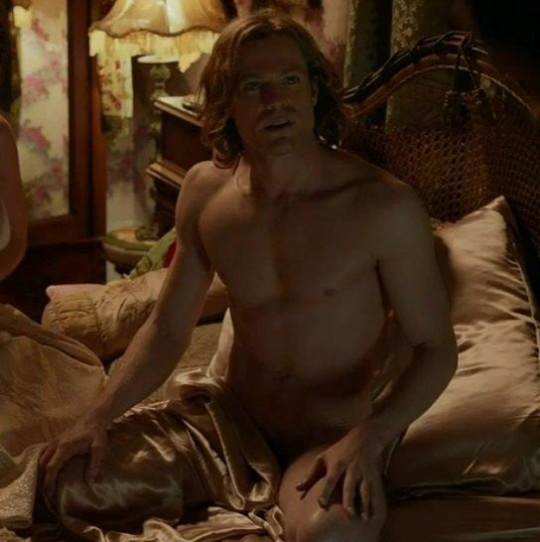
#the answer is not jerma. btw#pls rb this is an important study#dennis reynolds#iasip#dio#dio brando#jjba#jojo's bizarre adventure#patrick bateman#american psycho#jerma#jerma985#lestat#lestat de lioncourt#interview with the vampire#iwtv#iwtv 2022#vampire chronicles#vc#couldnt find a 6th white boy off the top of my head :(#not one that could compete....
344 notes
·
View notes
Text

allen. that face you make when the bat gives you another task actually fuck that in the middle of writing this my dad called and informed me that our electric kettle died guess we're boiling our water in a pot now
#i'm going home tomorrow and what am i supposed to do now? become american?#how am i gonna make my tea now? we don't have a stove kettle#fucking hell#evillious chronicles#ec doodle#allen avadonia#guess it's all porridge and dumplings and coffee capsule machine now#adding this but please don't take the american joke seriously#i'm just terrified at the idea of boiling water in a microwave
59 notes
·
View notes
Text
My new theory is that Cassie doesn’t want to write contemporary period books anymore and that’s why she had to wait till 2026 to release book 1 of twp bc by then TLKOF is historical fiction as 2015 was over a decade before.
#like think about it#the american shadowhunters living in a pre trump world#living in a pre pandemic world#living in a pre taylor swift rerecording world#living in the year gay marriage became legalized in the US#when things were looking more up#living in a pre/early hamilton world#SEE#HISTORICAL FICTION#twp is gonna be so nostalgic#twp#nostalgia#the wicked powers#the shadowhunter chronicles#tsc
45 notes
·
View notes
Text



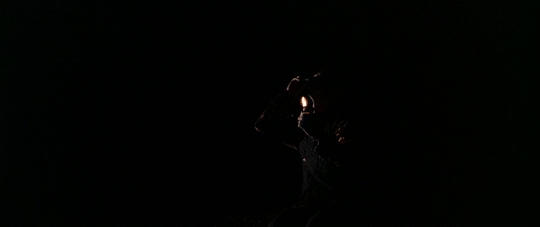

Pitch Black (2000) --------------------- dir. David Twohy cin. David Eggby cs. USA
#pitch black#riddick#chronicles of riddick#2000s#2000#2000 movies#vin diesel#radha mitchell#cole hauser#rhiana griffith#keith david#lewis fitz-gerald#david twohy#david eggby#science fiction#american cinema#horror#science fiction horror
97 notes
·
View notes
Text

Bodies in my wake / Noose 'round my neck / I'm comin' back again / Better make it quick!
#em draws stuff#frankenstein chronicles is a show you can watch#frankenstein chronicles#john marlott#tagging with the real title as well If anyone is looking in the tag for this show#(I really don't think anyone is but if you are then Hi! sure was a television show there huh!)#best viewed with high screen brightness (I spent three hours coloring and I would like you to be looking)#it has been a while since I returned to this old-favorite topic (stitched-up undead fellows) and I had enough visual inspiration#from the show itself (the blake engravings! the teal lighting in ep6!) to really have fun with the rendering on this one#continuity caveat to the 1.5 people who care - I Know that marlott no longer has the chancre on his hand by the time he's all stitchy#but this show does enough with his unreliable perception of the world around him that I felt that I couldn't leave it out#oh and also that's the elemental symbol for mercury! as it seemed only apt to include it in some way#caption lyrics from american murder song since it seemed only appropriate#(also I listened to all of murder ballads of 1816 while coloring this For The Vibes)#ANYWAY now that I have Drawn Picture I might watch s2 now and find out what happens to this v sad wet man next!
42 notes
·
View notes
Text
One of my professional nemeses is a guy who does not know I exist who consistently posts god awful takes on Inside Higher Ed but today he posted one bitching about the decline of Western culture being taught in schools and how "It’s no secret that today’s kids have much less exposure to those Greek, Roman and Norse myths, legends and sagas" which is a bold take in the age of Percy Jackson, but he then went on to cite Lord of the Rings and Chronicles of Narnia as newer cultural touchstones that "reflect more modern sensibilities, values and concerns, including themes of diversity and inclusion and environmental awareness. They’re crafted with contemporary language and settings, even when set in fantastical worlds, making them more immediately accessible to today’s children than the sometimes archaic language and unfamiliar settings of ancient myths" which ???? Yes Lord of the Rings, infamously written with accessible language.
This is the same guy who wrote a post about how we no longer produce the same caliber of intellectuals as... and then listed off 15 people, all white, 1 woman, and two Georges, so I honestly think he may have been cryogenically frozen for a few decades and they thawed him out to write terrible thinkpieces.
#he went full mask off a while ago so I mostly don't read his posts anymore#but I did today and went ah same shit as always#this is the same guy who wrote that Mexicans came to the Americans 300 years ago#apparently confusing Mexicans with the Spanish#this fucking guy: what is a new trendy hip with the kids media franchise.... chronicles of narnia
48 notes
·
View notes
Text
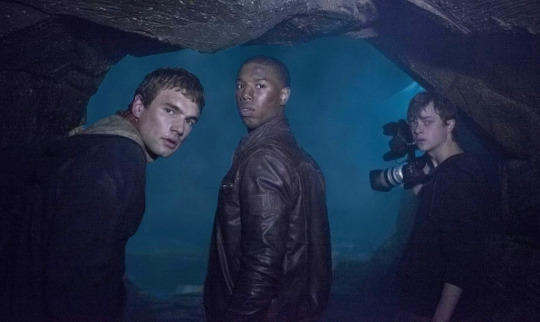
SUMMARY: Three high school friends gain superpowers after making an incredible discovery underground. Soon they find their lives spinning out of control and their bond tested as they embrace their darker sides.
#chronicle (2012)#science fiction#found footage#superpowers character#2010s#united states#north american movie#mentionable warning#child abuse#horror#movie#poll
41 notes
·
View notes
Text
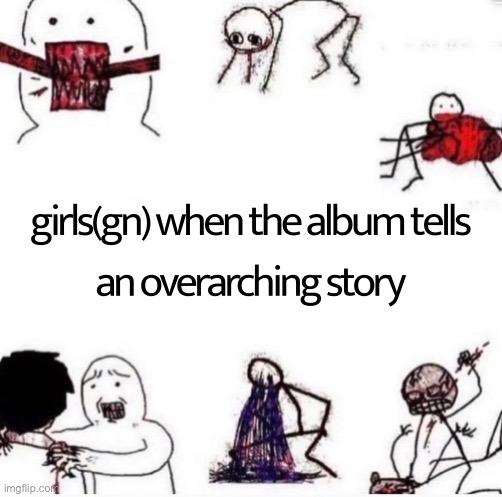
i feel so normal about the album as an art form
#rambles#the youngblood chronicles#fall out boy#the black parade#danger days#american idiot#three cheers for sweet revenge
37 notes
·
View notes